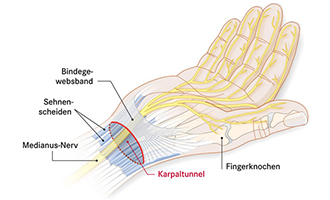Our bodies have adapted to a life in motion in the course of evolution – but what does our everyday life look like? Especially in the home office, we spend even more time sitting than in the office. A meeting you had to attend a few days ago is now on your phone. The way to the customer is dropped and even the way to work no longer takes place. You notice that the movement is unfortunately neglected in the home office, to which the body reacts with tension and pain.
HIPPOCRATES (460-370 BC) SAID:
“ALL PARTS OF THE BODY THAT ARE DESIGNED FOR A FUNCTION REMAIN HEALTHY, GROW AND HAVE A GOOD AGE IF THEY ARE USED WITH MODERATION AND ARE PRACTICED IN WORK THAT EVERY PART IS USED TO. BUT IF YOU DON’T NEED THEM, THEY ARE MORE PRONE TO DISEASES, DO NOT GAIN WEIGHT AND AGE PREMATURELY. ”
How is it in your own home office work routine? Take a moment and carry out the self-test:
In order to break out of the cycle of inactivity, you will find some tips below on how to make your everyday work more active. Try it out yourself and become a mover – because this not only makes you feel better physically, it also makes you more productive!
Expert tip: At home you don’t have to be embarrassed in front of a colleague and can do your exercises unobserved.
brew coffee or tea
They have already saved the morning of many and are part of the morning routine for many – coffee or tea. But what do you do in the time until it is finished? The perfect time for an exercise to balance muscular imbalances or to relax the muscles. To do this, choose an exercise from our exercise videos that is good for you and carry it out while you wait.

catch some fresh air
At lunchtime, the brain reaches its creative low point, and even the simplest tasks are often demanding. Especially in the home office, when everyday life is mainly spent in closed rooms, you should make sure to take short breaks in the fresh air. Try to plan a short walk every day during your lunch break to re-oxygenate your brain.

phone calls as an opportunity
It’s no surprise that home office meetings are held over the phone in most cases. This can serve as a reminder to take a new sitting position and also offers you the chance to get up once. So have your headset ready and the next time it rings you will know what to do.

Working in a provisionally furnished workplace in the home office, which pushes the body into uncomfortable forced postures and offers no alternative to sitting, is the cause of tension and pain in the neck, shoulder, neck and arms.
In the following we want to take a closer look at the “19 KG head” and the “mouse arm”.
The 19KG head (pain in the cervical spine, shoulder, neck)
It has already been explained that the home office offers an even more sedentary environment than the usual office space. The following section deals with the phenomenon of the 19kg head. Lean back for a moment, close your eyes and mentally walk through your company. Watch your colleagues as you walk past. You will surely see one or the other who has clearly pushed his head forward. The changed head position can have various reasons: weak eyes, sleeping on a pillow that is too high, excessive use of laptops or cell phones, or back or neck muscles that are too weak.

In medicine, this is known as the “Forward Head Posture”: the “forward-facing head position”. According to the Form Follows Function principle described in week 1, frequent use of this posture can lead to a permanent change in the head position.
For a short time in this position, our bodies face a difficult task. The orthopedist and physiotherapist Dr. In his book “Physiology of Joints” (Vol.3), Adalbert Kapandji writes that for every 2.5 cm that our head goes forward, the weight of our head on the spine increases by 4.55 kg. For example, if you are sitting in front of your screen and are having difficulty reading a small font, you may move your head closer to the screen. This change in head position means that your neck and neck muscles now have to hold significantly more weight instead of the normal 4-6kg of the human head. If you push your head forward approx. 10 cm, your neck muscles must carry up to 19 kg.
Mouse arm (pain in wrist, forearm)
Where the hand passes into the forearm, the carpal bones form a half-open groove on the inside, is the carpal canal. The median nerve or middle nerve runs through this. Overloading can occur due to one-sided computer work or an inclined keyboard.

This leads to a narrowing of important structures in the hand area (e.g. carpal tunnel, central nerve) or nerve compression (high pressure on nerves, which can lead to functional restrictions). If these structures ignite, severe pain when moving the hand or numbness of the fingers are possible consequences.
To prevent the inflammation and the resulting pain when moving your hand, you should do these exercises as daily as possible:
FASCIA BALL FOREARM
SHOULDER MOBILIZATION
THE BEST SEATING POSITION IS ALWAYS THE NEXT.
SITTING CORRECTLY
We can only adapt our home office environment ergonomically to a limited extent, but we can influence our behavior. A team of researchers from Norway conducted a meta-analysis of the impact of physical activity on the negative effects of sitting. The researchers came to the following conclusion: Those who exercise enough can overcome the health risks of sitting for hours. All you need is one hour of exercise a day.
If you exercise a lot regularly, you can compensate for longer sitting phases. “Moving a lot” in this case means 60-75min of exercise a day. It is optimal to consciously interrupt long sitting phases of over 2 hours with the help of small active breaks.
Our expert Katharina Brinkmann will now show you in the following video how you can work against the symptoms described above while sitting.
Bibliography
- Glöckl, Josef & Breithecker, Dieter – Active Office – Warum Büros uns krank machen und was dagegen zu tun ist. Springer Gabler: 2014
- Storch Maja & Theiss Caroline – Bewegen Sie sich besser! Mit Bewegungsperlen und der richtigen Motivation durch jeden Tag. Hogrefe: 2018




